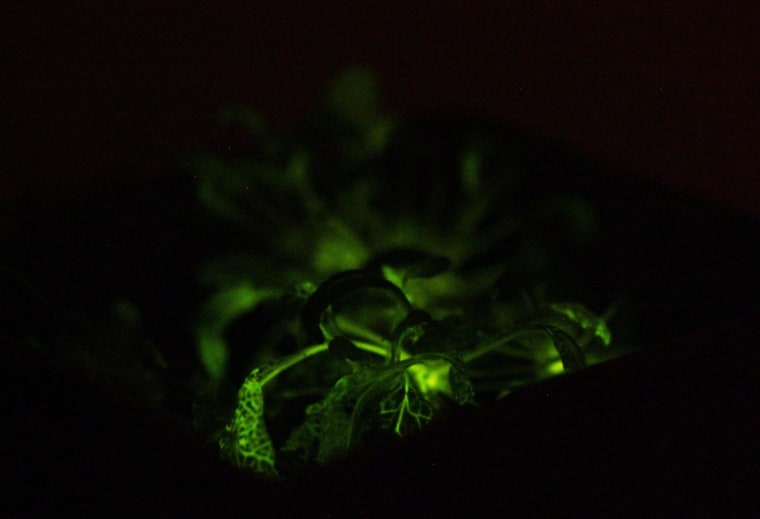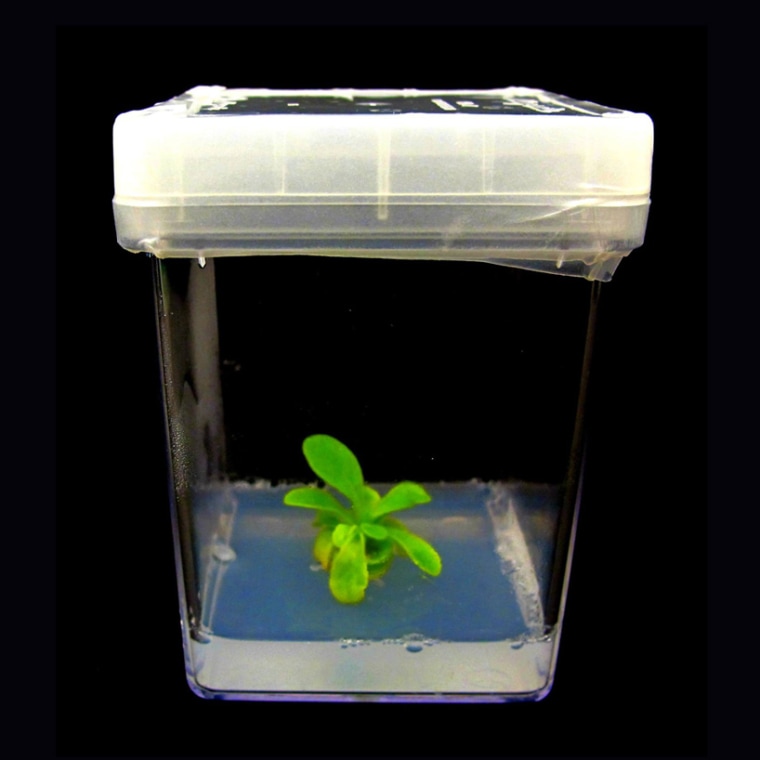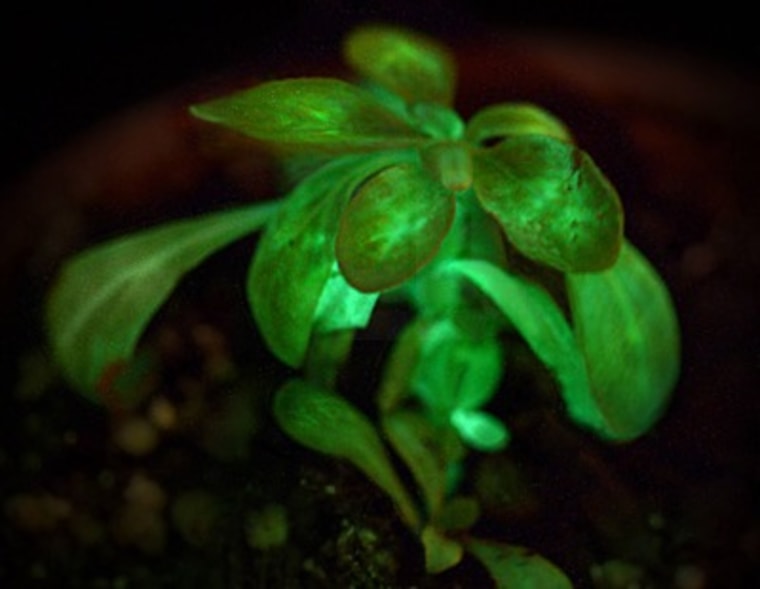Would you believe that 2014 will be the battleground for the world's first glowing plants for the home? It's true: Two long-running projects have almost simultaneously reached the point where their bioluminescent flora can be offered for sale — but don't go throwing away your night lights and houseplants just yet.
These plants glow because their genomes have been modified with bits from luminous bacteria, which produce a class of chemicals called luciferins. These chemicals are found throughout the animal world and used for many purposes, but are not used by plants (though there are some bioluminescent fungi).
Research has been done on the topic since the 1980s, and this year two new companies are proud to present their lambent creations to the public: Bioglow, which is offering the first 20 of its privately developed plants for auction, and Glowing Plant, which is closing in on shipping seeds after a blowout Kickstarter last year.
Bioglow has been working on its plant, called the Starlight Avatar, for several years. Starlight refers to the amount of light it produces, and Avatar to the movie of the same name, which featured a glowing, colorful jungle.
"During the past 3 years, since publication of the first prototype in 2010, we worked hard and succeeded in improving the light output multiple-fold," wrote Alex Krichevsky, founder and chief scientist at Bioglow, in an email to NBC News. "The Starlight Avatar is the result of this work."

On the other hand, the Glowing Plant project is comparably new — though they are both newcomers compared to the first research on self-illuminating plants.. And its researchers have a different approach: to build a platform that others may improve.
"One of the things we wanted to do with our project was to make it all open source," said Glowing Plant's Antony Evans in a phone interview. " All of the pieces and parts and DNA we synthesize will be made available, and we hope that from that there will be a lot of innovation."
Neither plant produces much light — you can see it with the naked eye in the dark, but only just — and they're both rather small, more teacup plants than potted ones. Neither will survive outside for long. And both use luciferin-producing genes found in bacteria. But beyond that, the differences become more pronounced.
"These molecules, because they're in a high-energy state, are quite toxic to the plant," explained Evans. The challenge is to produce as many luciferins as possible while simultaneously boosting the plant's ability to metabolize them. Fortunately, plants can also accept luciferin-recycling genes that the bacteria use — but which ones?
"I think we've identified over a hundred bioluminescent systems," said Evans. "That's some tough research, that's why we want to keep things open and get others to contribute."

But experimentation has brought results. "Overall the plants are quite resilient," wrote Krichevsky, "and the biological light emission machineries are very efficient."
So your tiny Nicotiana (Bioglow) or Arabidopsis (Glowing Plant) will live its full two or three month lifespan, glowing very dimly all the while. How dim? Neither grower has actually measured the light output of the plants, so any comparison will have to be done in person.
"Initially we thought about quantifying the strength of the light emitted by the plants, however we found out that the ultimate measurement is how people perceive the plants' glow," wrote Krichevsky. "We 'test' new plants by showing them to our friends and family and gauging their 'wow' reactions."
Not scientific, exactly, but probably true: A few fractions of a lumen might not mean much to the observer when confronted with an plant that looks like it comes from an alien world.
What's next? Glowing Plant is hoping to get the glow genes to take in a rose, and Bioglow is working on improving brightness even further. You can bid on Bioglow's first plants starting Jan. 31; if you're willing to wait, you can pre-order a packet of seeds from Glowing Plant today for delivery in the summer.
Devin Coldewey is a contributing writer for NBC News Digital. His personal website is coldewey.cc.
